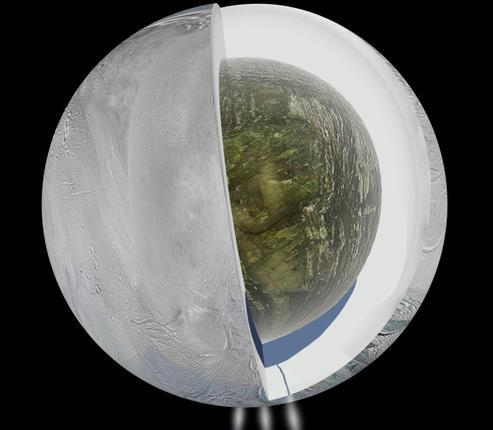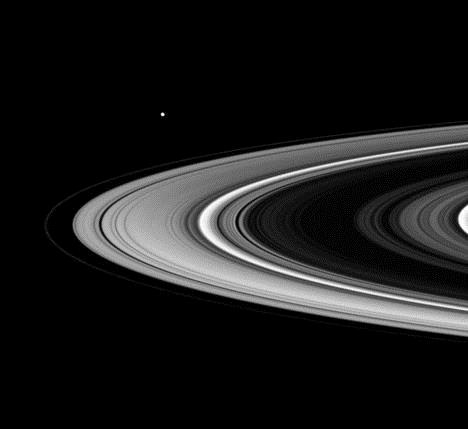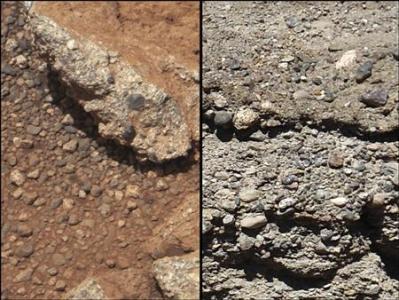April 6, 2014
NASA has said the discovery furthers "scientific interest in the moon as a potential home to extraterrestrial microbes".

April 6, 2014
NASA has said the discovery furthers "scientific interest in the moon as a potential home to extraterrestrial microbes".

This illustration provided by NASA and based on Cassini spacecraft measurements shows the possible interior of Saturn's moon Enceladus — an icy outer shell and a low density, rocky core with a regional water ocean sandwiched in between the two at southern latitudes. Plumes of water vapor and ice, first detected in 2005, are depicted in the south polar region.
By studying the gravitational pull exerted by Saturn’s moon Enceladus on the Cassini spacecraft, scientists have found that the moon could harbour a subsurface ocean of liquid water.
NASA has said the discovery furthers “scientific interest in the moon as a potential home to extraterrestrial microbes”.
On three occasions between 2010 and 2012, Cassini flew by Enceladus within 100 km, twice over the southern and once over the northern hemisphere. During these flybys, Cassini’s orbit was pushed and pulled by the moon’s gravity, indicating an uneven distribution of mass inside the moon.
Though the disturbances were small — 0.2-0.3 mm/second — scientists have been able to conclude that there is excessive mass about 30-40 km beneath Enceladus’s south pole, and a deficiency at the surface.
“The perturbations in the spacecraft’s motion can be most simply explained by the moon having an asymmetric internal structure, such that an ice shell overlies liquid water at a depth of around 30-40 km in the southern hemisphere,” said Luciano Iess, lead author of the results published in Science on April 3, 2014 in a statement.

This January 17, 2007 image made by the Cassini spacecraft's wide-angle camera, at a distance of approximately 9,00,000 km from Saturn shows Saturn's rings with its moon Enceladus as a white dot above the sunlit rings. Scientists have found that Enceladus could harbour a subsurface ocean of liquid water.
The scientists also noted that while the gravitational data and Enceladus’ topography does not rule out a global subsurface ocean, it is more likely that there is a regional sea that extends from underneath the south pole to the 50° south latitude.
In 2011, a Jovian moon, Europa, was shown to harbour liquid water under an ice shell that covered the body’s entire surface. NASA has planned a mission to investigate Europa and allocated $15 million earlier this year to develop a mission.
The Cassini robotic spacecraft was launched in 1997 by NASA, European Space Agency and the Italian Space Agency at a cost of $3.26 billion to study the Saturnian system.
Courtesy: The Hindu















































































































